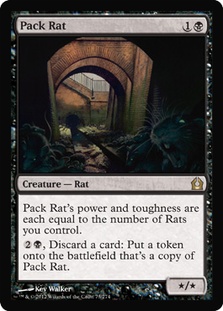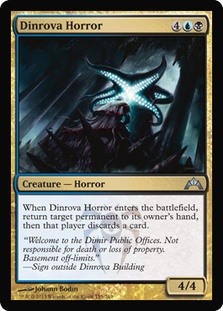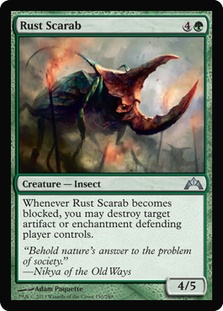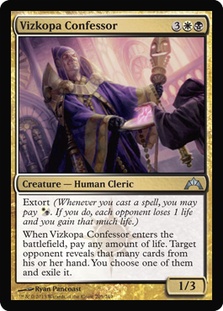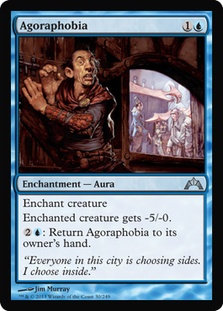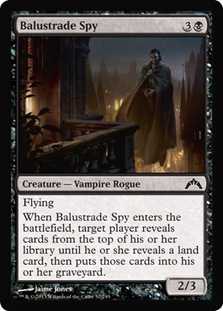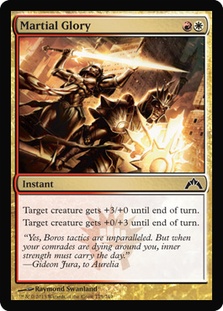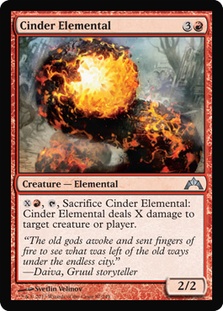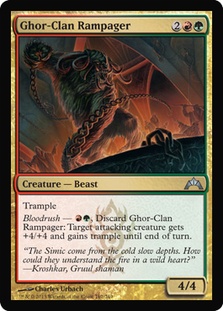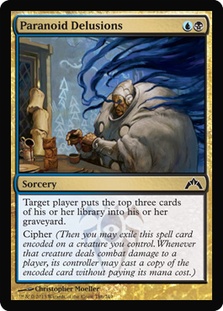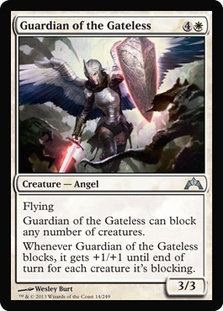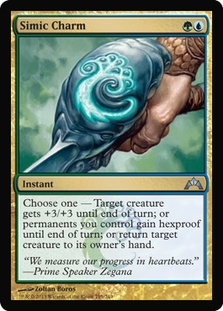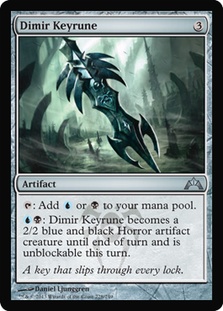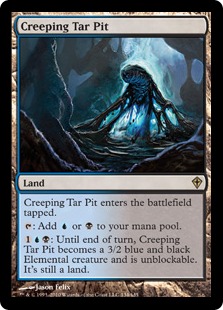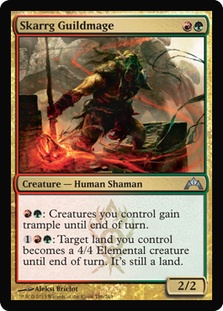It’s time to crash some gates, folks! Gatecrash is banging on the door, and it’s time to let it in. A lot of you will be marching off to Prereleases across the country this Saturday, and some of you will be foolish enough to do so in the middle of the night (*cough*me too *cough*). With that in mind, I want to take a bit of a break this week from wacky Standard decks to go back to my favorite part of Magic: Limited.
I have played more Constructed over the past year than the rest of my seven-year stint with Magic combined. I’ve loved doing it, don’t get me wrong, but I have been pining to rip some packs open and not know what I’m playing for a change. Return to Ravnica is/was a great Limited format, and Gatecrash will be more along the same lines, with access to five new guilds and all sorts of spells and dudes to throw at your friends. I can’t wait!
If you’re like me, you’ve been following the spoiler closely over the past couple weeks, sometimes to the point of clicking the refresh button on your browser multiple times a day just in case they snuck one in there. Now that the full spoiler has been sitting on the stove for a few days, let’s take a look at how some of these cards will impact your Saturday morning.
When you look at a set for its Limited potential, there’s something important we need to remember. When you’re opening booster packs and playing with their contents, the most common cards that you’ll play with are, well, commons. Uncommons are also frequent enough that you can hope to get a few in your stack. Rares and mythic rares, although splashy and often obvious inclusions, are much harder to bet on, and as such they generally affect a format in a subtler, splashier, and less reliable way.
Unless you are this card.
I’ve compiled a Top 10 Limited list consisting only of the “meat and potatoes” of the set, the commons and uncommons, that you will be likely to encounter during this weekend’s Prerelease and in every draft beyond that. These are the commons and uncommons to remember when you’re fighting an opponent who has the mana base to cast it or when you’re considering switching into another color mid-draft. Although rares are plenty powerful, these will have a wider and deeper impact in the long run. I’ve done this list on my blog for the last few sets starting with Dark Ascension, and now I’d like to bring you one for Gatecrash!
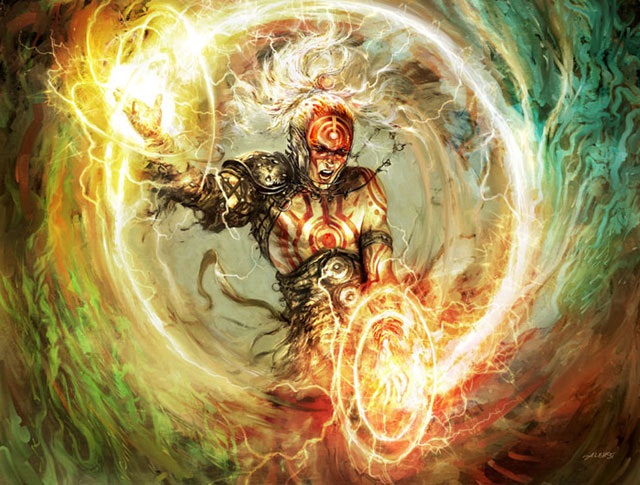
One of my favorite things about the Return to Ravnica Prerelease was the ability to choose my guild, which did actually have an impact on my pre-game, if you will. I had to consider which guild would do better against others and consider strategies when building and playing against certain matchups. This added deeply to the Prerelease experience for me. I was the only representative of my guild that played in our Prerelease, and I ended up scraping a 3-0-1 silver finish out of it.
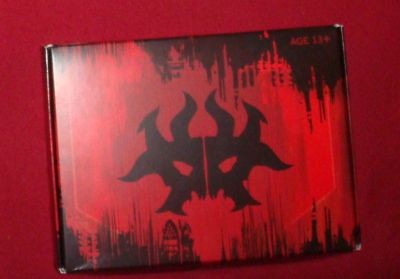
That red on the box is my enemies’ blood.
This time we’ll get to choose from five new guilds, so I want to do some strategy discussion about which guild, in general, is the best one for use in the Prerelease. Don’t worry, each one has its merit, but in examination of the set at large, I’ve done my best to narrow it down to one guild. Along with that, there are three guild cycles returning in this set: Guildmages, Keyrunes, and Charms. I’ll highlight my pick for the best guild offering from each cycle. Now, let’s dig into the Top 10!
Well, almost…as I pored over the spoiler list, it was hard to cut to ten, so here’s one that barely missed the cut.
Honorable Mention: Dinrova Horror
I’d discard a card too if I saw that thing.
Dinrova Horror is a terrifying curious critter that reminds me a lot of a bunch of other cards that have been strong in recent years; most recently, I recall Assassin’s Strike from Return to Ravnica. Although not as much as a two-for-one as its predecessors (unless they’re hellbent), this does give you a moderately sized body, one that can at least stand up to some of green and red’s stouter bodies. It gains you a fair amount of tempo and can delay them for a turn and/or free up a ciphered attack in an awkward board state. It helps you when you’re charging the line and when you’re holding up the shield.
It didn’t make the list because it is a bit expensive and there are a fair amount of games where it might rot in your hand. Not all Dimir decks will want it, but there are a good many that will, and I’m fairly sure that if you open it in your Sealed pool and the surreptitious tenth guild is calling to you, you’ll play it.
At number ten…
#10: Rust Scarab
Ach, Hans, run! It’s a bigger Trygon Predator!
Green creatures are getting more powerful every year, and Rust Scarab is no exception. A 4/5 for five is an on-point deal nowadays, and his 4G cost is also easily splashed in even the wildest of brews. He goes well with either guild of green, as any mono-colored creature should in a multicolored set. Simic loves his high P/T-to-cost ratio for their evolving guys, and Gruul likes the big body on the ground. I think the second clause will be fairly infrequent, but pumping him up makes blocking more necessary, despite at a loss for your opponent. I like the fellow; I played Village Survivors all over the place in ISD Limited, so why not this rendition?
#9: Vizkopa Confessor
“Don’t worry, my child…I can keep a secret.”
Oooh, saucy. An extortionist combined with an effective two for one. The more life you pay for this fellow, the better your choices, so it’s best to use him against a full-gripped opponent even if the life cost is steep. After all, life is a currency with which Orzhov easily barters. If you can ramp into him on the play, you can take a look at several cards on turn 4, silencing their biggest bomb or extracting that crucial piece of removal. This Cleric has the potential to be very dangerous, and I’d argue he is most effective against non-aggro decks because you’ll have more life to pay and you’ll also have more cards to look at when it comes time to cast him. Although not the most relevant of bodies, he can extort all day, giving him value long after your opponent has confessed.
#8: Agoraphobia
1U: Take target creature to a mosh pit.
Beautiful flavor and elegant, blue-friendly removal comprise this solidly designed card. -5/-0 will shut down even the unruliest Gruul monster or the sneakiest Dimir operative. Agoraphobia will offer you invaluable protection in the early turns, and it can be easily recast to deal with late-game problems. Agoraphobia is almost completely a control card. The most aggressive blue decks will often want to pass on this, but deep decks that grind out wins after double digit turns will be happy to pick these up. Bear in mind that you only want to leave mana up to Recall it very late in the game; I see a lot of people waste turns unnecessarily to keep these small-impact effects available.
#7: Balustrade Spy
Ceiling Bat is watching you mill.
This fang-laden flyer is a powerful addition to any black deck. Its evasive nature offers plenty of options for ciphering, and mill-oriented decks get a reasonable effect, albeit a bit lackluster. This guy is great in multiples, and you’ll want as many as you can hold in Draft. Nearly every black Sealed deck will want this guy, aggressive and control alike. The three toughness is particularly relevant on a flyer; it stops 2/X flyers forever, and it still has enough punch to knock out low-cost attackers. Bear in mind it’s also a common, meaning you’re bound to see it in every Gatecrash Limited event you attend.
#6: Martial Glory
Apparently, supplies were running short, so the Legion gave a sword to one soldier and a shield to another.
This card looks like a backward version of Agony Warp (Comfort Stasis?), which is a great Limited staple for Cube and Block Draft alike. As such, this card can turn tricky combats powerfully in your favor. Although it has the potential to two-for-one your opponent and completely wreck their tempo, I feel this will most often just be Giant Growth. If you’re playing against Boros, it is essential that you learn to play around this common; if your opponent offers seemingly unprofitable combats, be on your guard!
Things can go haywire in a flash on the back of this card, and its efficient cost means your opponent can squeeze it in between another spell that turn. Every R/W deck will want at least one, and the more you have, the more your opponent will be forced to play around it no matter if you have it or not at the moment.
#5: Cinder Elemental
How much closer to Fireball can you get than an animated ball of fire?
Blaze and friends have always been and will always be great Limited cards. Cinder Elemental is a Blaze on a stick, and although it’s not very flashy, I believe it is the only non-rare form of this effect in the format. Sometimes, you just gotta dome ’em for nine. He’s a Blaze that can block, which will occasionally be relevant, and he goes along well with Boros, who needs creatures to add to its battalion count. Cinder Elemental, unlike Blaze effects of the past, is much easier to interact with and thus disrupt, so bear that in mind when you snatch one up or sleeve it in your Sealed list.
#4: Ghor-Clan Rampager
What a ghory mess.
One of the more exciting releases in a long time despite his fairly simple appearance, this efficiently costed bruiser will wreak havoc on defensive decks. Four power for four with built-in trample is exactly where Gruul decks want to be. Arguably the best Gruul card in the set, this card also has a great combat trick written in. Although it’s highly synergetic for Gruul’s play style, I think it will be especially useful in its neighbor, Boros, if they happen to splash green.
Making a 1/X double strike enormous and trampley with its easy-to-pay bloodrush ability is how you win games. Gruul decks will want as many of these as they can find, and it will highly motivate splashes and switches throughout Gatecrash’s Limited tenure. Rest assured that this card will wreck combat math for months. In Draft, this is first pack, first pick material. Watch out!
#3: Drakewing Krasis
This guy is the real deal: cheap, evasive, simple, and synergetic. Who doesn’t want to play with a Lizard Drake? I’m pretty sure that a Drake is a Lizard that flies, but anyway… Mr. Drakewing here is everything that an aggressive Simic build wants: high evasive power that interacts well with evolve and receives pumps well to make the trample relevant. Skywinder Drake, Horizon Drake, and other Drakes before it have been great, but they’ve often come with a disadvantage. This one doesn’t save for the fairly specific mana cost, and it is just a common. Simic players will want infinity of these, and it can arguably be first picked in a weak pack.
#2: Paranoid Delusions
Wizards gave some love to the mill plan! This card can be absolutely backbreaking in the right deck. Repeated, cheap (read: free) mill for the dedicated mill deck on the back of evasive creatures will finish a maddening opponent very quickly. One-drop followed by a turn 2 cast and encode your one-drop and get there. As such, this does prioritize cheap, sneaky dudes. Do not let this one get away from you; this card can do some serious damage.
It’s one of the cheapest cipher spells, and as such it is arguably the most dangerous in a Limited environment. The milling will kill them faster than your damage with this fellow, which is basically a tenth of their library a swing. Dimir doesn’t get a ton of indiscriminate milling effects in this set. Most are “mill until you hit a land,” but some classic mill like this is just what the cutpurse ordered. Get in there, you little sneak thief!
And finally…
#1: Guardian of the Gateless
Come at me, Boros.
Wait…is this a real card? At uncommon? Arguably the best blocker in the set and Return to Ravnica block to date, this Angel is a very high impact card for exactly when you need her. When you’re up against the ropes and you’re trusting the heart of the cards, you will literally hear the heavens open up. As you hold your hand aloft during your draw step, crepuscular rays will shower down and bathe you in sublime radiance. Time will stop. The game shop will grow silent in reverence. Yes, this card just saved your tush. She can pull you from the brink of death against innumerable odds, stuffing entire squads of tokens, brawlers, and flyers, and she can take a fair number of them with her.
It’s true, cards like Palace Guard have existed before, but they lacked the ability to stop everything (Palace Guard can’t fly) and were pretty useless in actual combat; they’re basically Fogs. The Guardian has the ability to decimate attacking squads. She greatly benefits from pumps and enchantments, and, if you’re safe for the moment, she makes a perfectly reasonable attacker, pushing three evasive damage through with no trouble at all. She is a bit of a sitting duck for removal, especially on an empty board, so any protection you can offer her will pay you back in spades. There isn’t a deck that will be able to cast her that will not want her. Easily first pickable over a good portion of the rares, I really feel like this Angel will be one of the defining cards of the format.
And there’s the list! As you can see, each guild has a lot of potential as a Limited choice. Picking one that stands above the rest will be tricky. Let’s take a peek at each cycle and see which card might have what it takes to stand above the rest. Bear in mind, these observations are at least a little bit in a vacuum. There are some times when the most useless mode on the worst Charm will win you the game, but in general, I feel the best Charm is…
Simic Charm! Each and every one of its modes is useful. Everybody likes Giant Growth, and two mana is still reasonable with other options available. The hexproof mode will probably be the least used; however, if you just have to protect your bomb (or ruin their Aurelia’s Fury mise), this is a great way to do so. The Unsummon is also outstanding. It’s a great tempo play if you are more aggressive, or it can be used defensively or responsively to a pump or an aura.
This is a great toolbox card that may even sneak into Standard; I know I’m already brewing with it. Simic Charm is the perfect example of a great Charm. Each of its modes (well, the second one less so) is just about worth a card on its own, but all bundled together, you get a great card in your opener or a fine mid- to late-game draw to push you through.
1. Simic Charm
2. Boros Charm
3. Gruul Charm
4. Dimir Charm
5. Orzhov Charm
I put Orzhov Charm last because it’s only good mode, the kill spell, is pretty bad if you’re behind on board. You won’t want a lot of one-drops in your deck for its Proclamation of Rebirth mode, and a Saving Grasp is not a great use of your draw step, either. The middle Charms have modes that could be useful but are a little more seasonal.
For me, the Keyrune decision was much easier.
Although each Keyrune offers a nice ability, Dimir Keyrune is by far the most powerful one. Sneaking through damage turn after turn is how you win games in grinding stalemates. Some decks which rely on blocking or speed to defend themselves will be ill equipped to deal with this card. Its elusiveness reminds me of another best-in-cycle card…
Although Celestial Colonnade was arguably better during its Standard foray because it was in Caw-Blade colors and didn’t die to Lightning Bolt, the Tar Pit now sees more play than any other manland. Any uncommon that emulates that design gets the thumbs up from me.
1. Dimir Keyrune
2. Boros Keyrune
3. Simic Keyrune
4. Orzhov Keyrune
5. Gruul Keyrune
The Guildmage contest is much tougher. These are the easiest to interact with, and their abilities are fairly specific and depend heavily on the game state, which means that their abstract power level varies wildly from their practical application. It’s a bit of a photo finish, and I could quickly be proven wrong about this if I stare the runner-up wizard in the face on my opponent’s side on Saturday, but here goes…
Grawr! Gruul’s Guildmage will work hard to get your biggest rumblers through and create some of his own. His ability to make your top-heavy bashers more lethal is cheap and easy to activate. I know I’ve activated my share of Kessig Wolf Runs with X = 0 just for the trample, and this feels about the same. The land matters subtheme is reflected in the second ability, which allows you to conjure a team from the very mana beneath your feet.
An untapped pile of land can be animated either as emergency defenders or an alpha-strike squad, all for four mana a piece (you have to tap/block with the land, so I’m counting it). This Guildmage is very straightforward, but its abilities complement Gruul as a guild and play style and ultimately are, in my opinion, the most broadly useful.
1. Skaarg Guildmage
2. Duskmantle Guildmage
3. Sunhome Guildmage
4. Vizkopa Guildmage
5. Zameck Guildmage
As I said, these rankings are especially shaky. I put Simic’s on the bottom because on an empty board he is pretty weak. However, there’s going to be a Sealed pool or Draft deck that loves him. Turning an Experiment One into a 5/5 for GGGGGGUUUUU is perfectly reasonable late game…right?
So where does that leave us on the best guild for the Prerelease? After considering as many possibilities as I could, I believe the best guild will be…
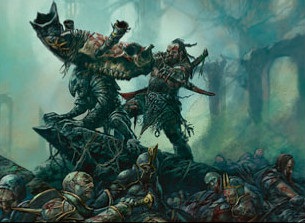
Gruul! Now, I’m doing my best to avoid bias here (Gruul is my guild), but if you take a look at the colors historically in Draft as well as the card pool from which this guild can draw, Gruul is, in my opinion, the strongest choice of all. Gruul offers consistency, aggression, power, and the ability to go over the top with trample and big dudes. It has good flying hate, removal, tempo, and the highest P/T-to-cost ratios amongst the guilds. Also, on an important note, it “pivots” well. Although you could open awesome enough stuff in green and red that you wouldn’t need to splash, chances are you will have to scoot to another color (or two, don’t be shy).
Gruul can move to Boros to make Naya to complement its aggressive nature with good utility and flyers, and it can move to Simic to make RUG, a color combo that’s rife with combat tricks and manipulation to keep your board stronger than your opponent’s. Boros is a close second, as its consistent aggression and intimidating numbers should keep it a step above the opponent. I’d say Simic is third, offering neat interactions and rewarding players who carefully consider combat math and game states. Orzhov and Dimir are great in congress, but I think each of these guilds’ power level will be highly dependent on their pool’s contents; Orzhov without much extort would be much worse than Gruul without bloodrush, for example.
What do you guys think? Am I way off base, or is there a chance you agree? Whatever you believe, prove your guild’s strength in the upcoming Prerelease and release parties at your local shop. Whether you’re a fresh face to the Magic scene or you’ve been playing for years (this will be my fourteenth Prerelease event), you will have a barrel of fun at your local game shop. And here to wish you good luck…

Join me next week for my Gatecrash Prerelease report and more, and no matter which guild you choose, don’t forget to untap!
– Matt
CaptainShapiro on Magic Online

